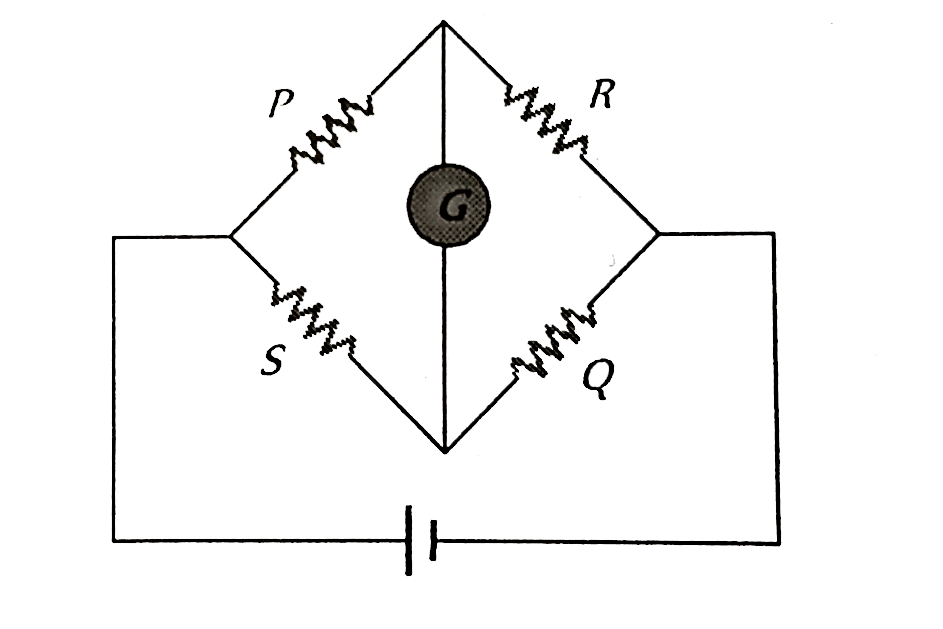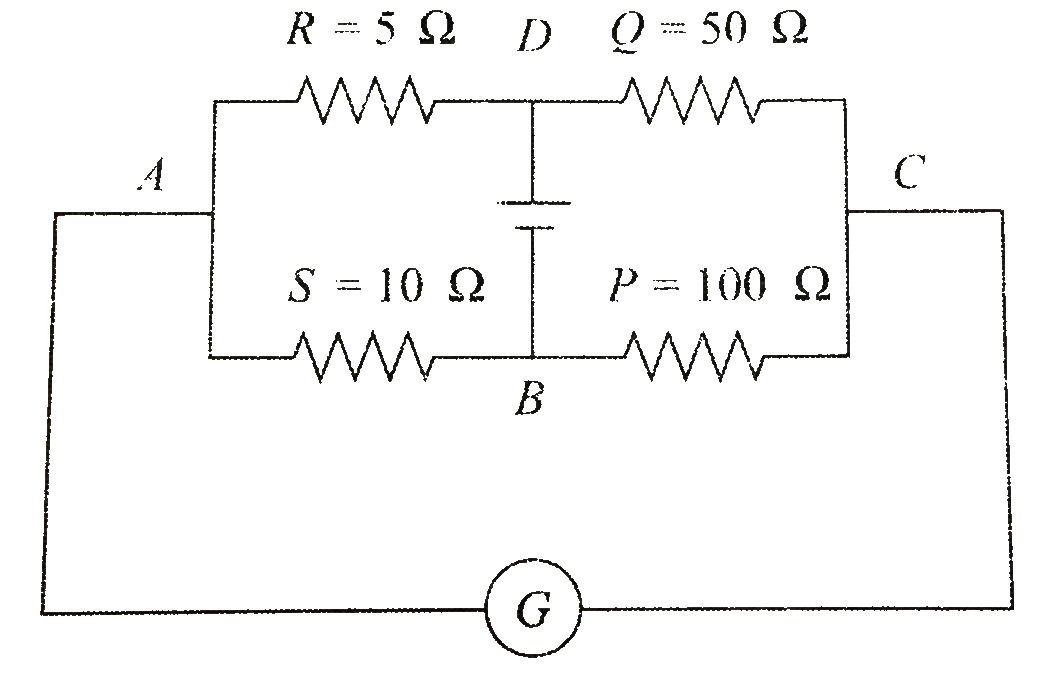Apply Kirchhoff's laws in electricity to obtain the condition for a balanced Wheatstone bridge.
Text Solution
Wheatstone bridge principle: Four resistances P, Q, R and S are arranged to form a bridge as shown in the figure with a cell E and key K1. A galvanometer G and key K2 are connected between the points B and D. On closing K1 first and K2 later on, if galvanometer shows zero deflection, then the bridge is balanced i.e.,PQ=RS
Proof : On closing the keys K1andK2, current I stars flowing through the circuit.
At point A : Current I1 flows through resistance Pand(I−I1) current flows through resistance R.
At point B : Current IB flows through G.
At point D : (I−I1) is coming from R and IS is coming from G. Hence total current at D is (I−I1+Ig) which flows through S.
At point C : (II−Ig) current is flowing from Q and (I−I1+Ig) current is coming from S.
Hence, total current at C is I.
Apply Kirchhoff.s loop law to loop ABDA−I1P+(I−I1)R−IgG=0
⇒I1P−(I−I1)R=0
⇒I1P=(I−I1)R ..........(i)
Apply Kirchhoff.s loop law to loop BCDB
IgG+(I−I1+Ig)S−(II−Ig)Q=0
The value of R is adjusted such that galvanometer shows no deflection i.e., Ig=0
(I−I1)S−I1Q=0
⇒I1Q=(I−II)S .......(ii)
Dividing equation (i) by (ii), we have I1PI1Q=(I−I1)R(I−I1)S
⇒PQ=RS ...........(iii)
Equation (iii) represents balanced wheatstone bridge condition.
|
Updated on:21/07/2023
Similar Questions
Knowledge Check
- Question 1 - Select One
In the circuit given, the correct relation to a balanced Wheatstone bridge is
 APQ=RSBPQ=SRCPR=SQDNone of these
APQ=RSBPQ=SRCPR=SQDNone of these - Question 2 - Select One or More
Figure 6.64 shows a balanced wheatstone bridge.
 AIf Pis slightly increased, the current in the galvanometer flows from C to A.BIf Pis slightly increased, the current in the galvanometer flows from A to C.CIf Qis slightly increased, the current in the galvanometer flows from C to A.DIf Q is slightly increased, the current in the galvanometer flows from A to C.
AIf Pis slightly increased, the current in the galvanometer flows from C to A.BIf Pis slightly increased, the current in the galvanometer flows from A to C.CIf Qis slightly increased, the current in the galvanometer flows from C to A.DIf Q is slightly increased, the current in the galvanometer flows from A to C. - Question 3 - Select One
Kirchhoff's first law of electricity follows.
Aonly law of conservation of energyBonly law of conservation of chargeClaw of conservation of both energy and chargeDsometimes law of conservation of energy and some other times law of conservation of charge
Use Kirchhoff s rules to obtain conditions for the balance condition in a Wheatstone bridge.
View SolutionFigure 6.64 shows a balanced wheatstone bridge.
 View Solution
View SolutionKirchhoff's first law of electricity follows.
View SolutionUse Kirchhoff's rules to obtain the balance condition in a Wheatstone bridge.
View SolutionWith the help of a neatly drawn and labelled diagram, obtain balancing condition of a Wheatstone bridge.
View Solution

